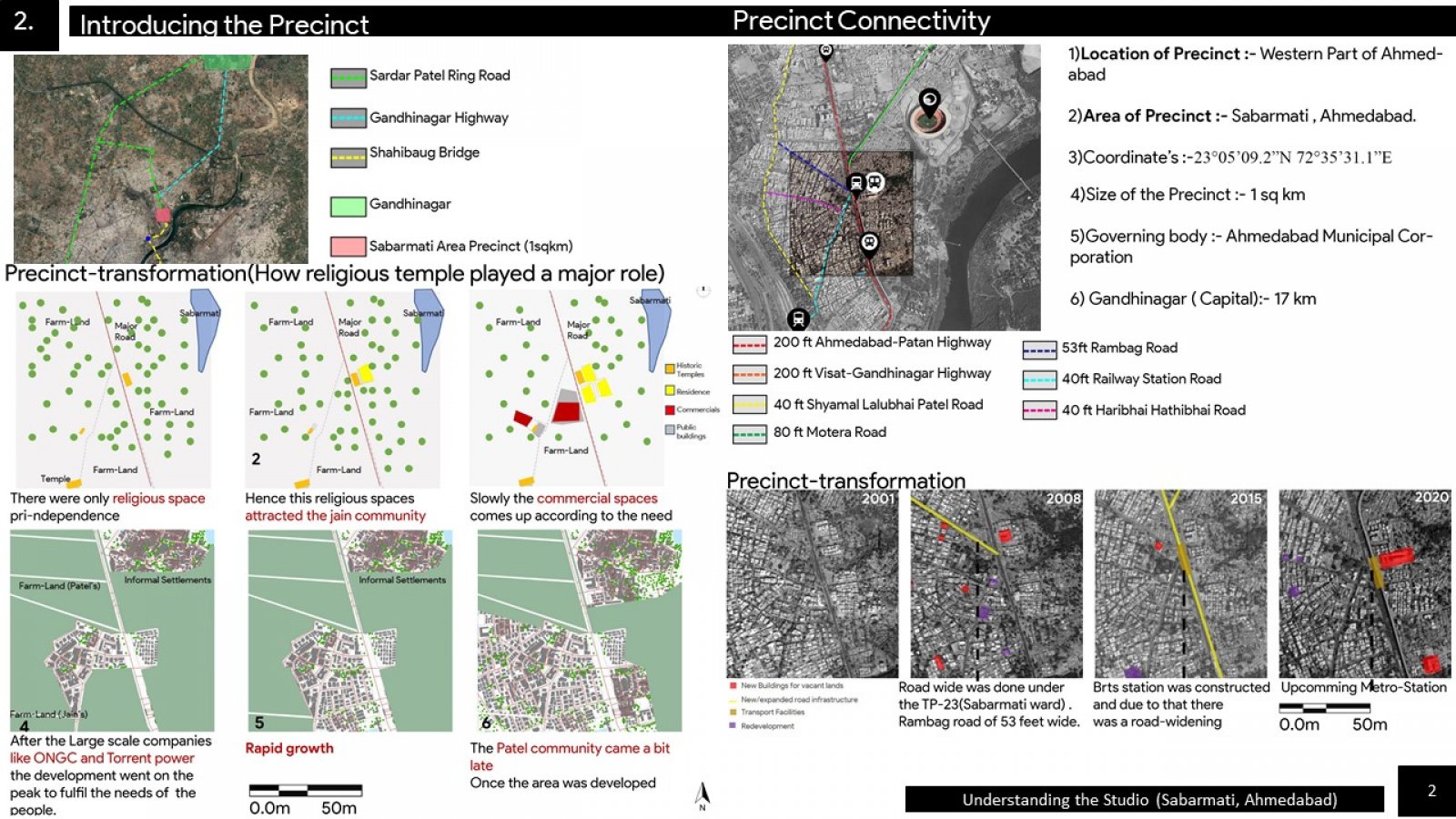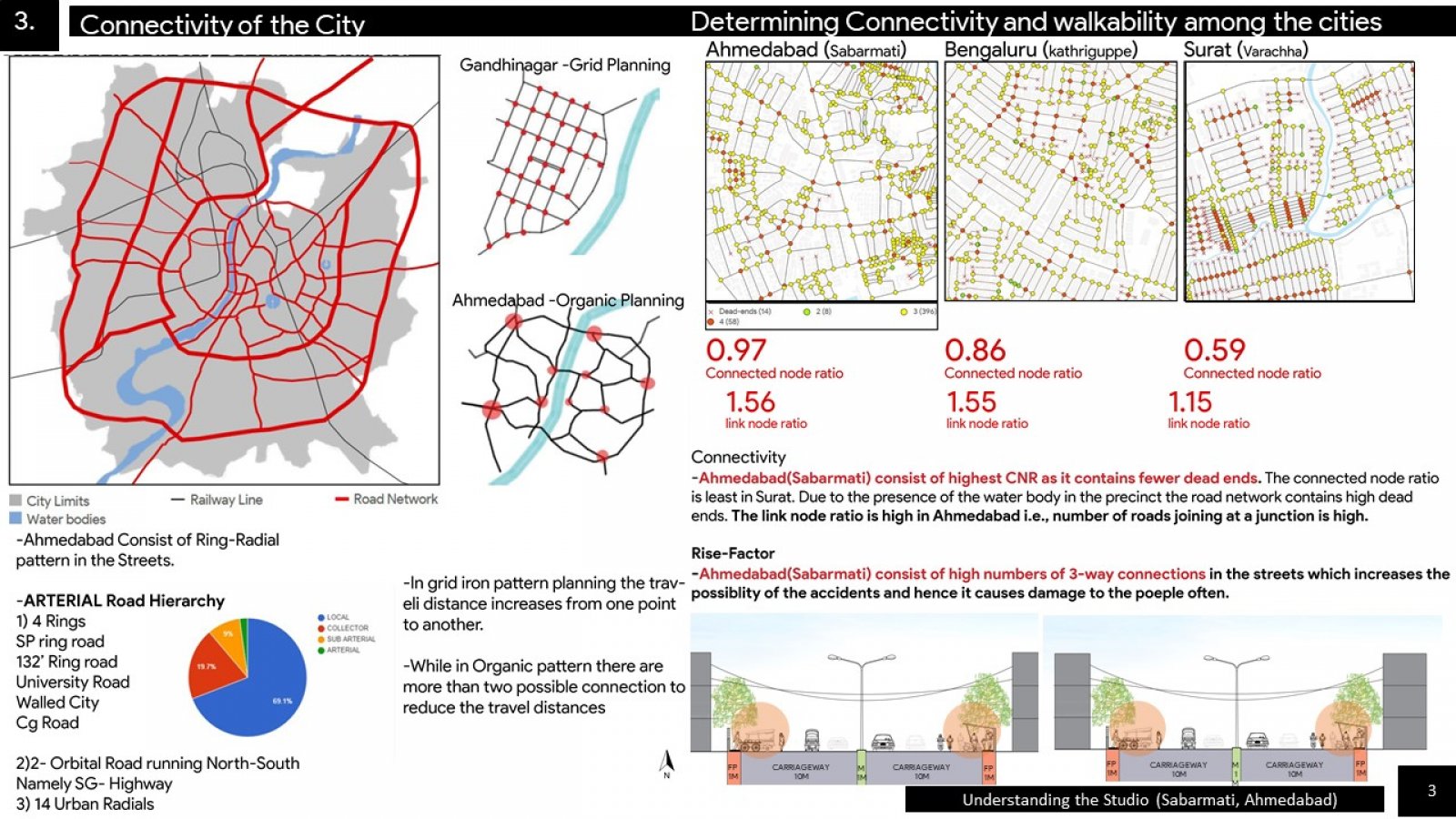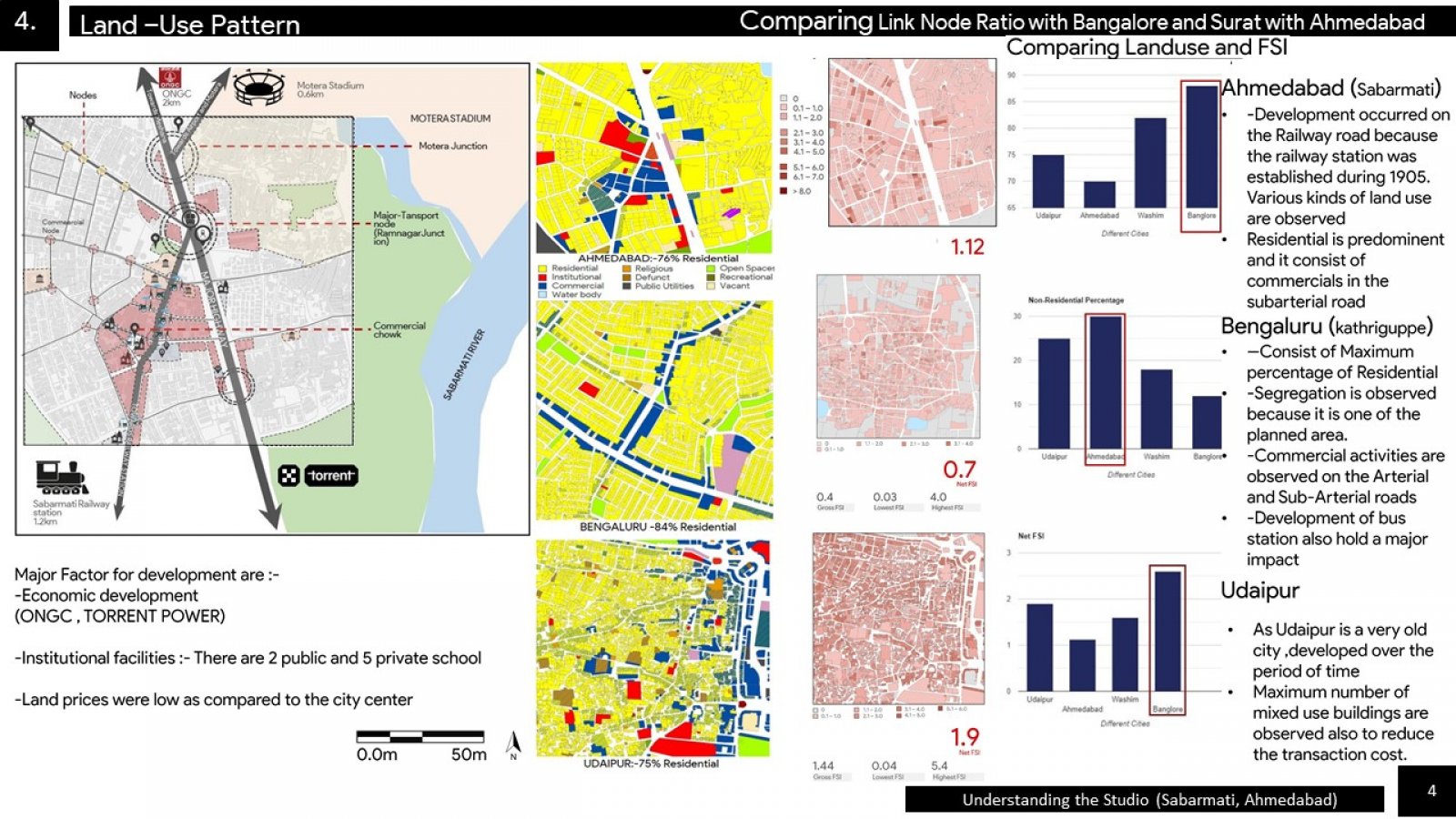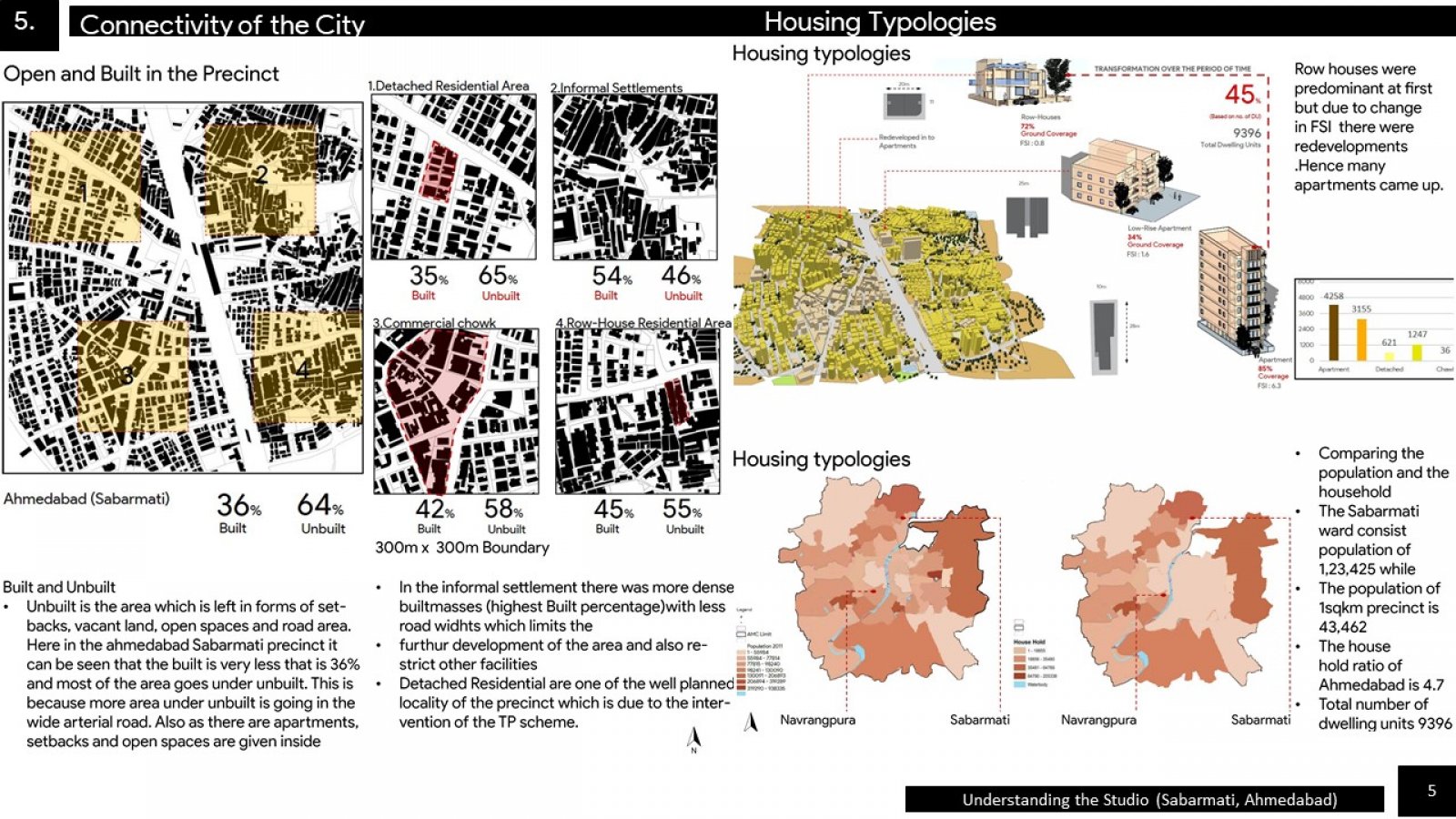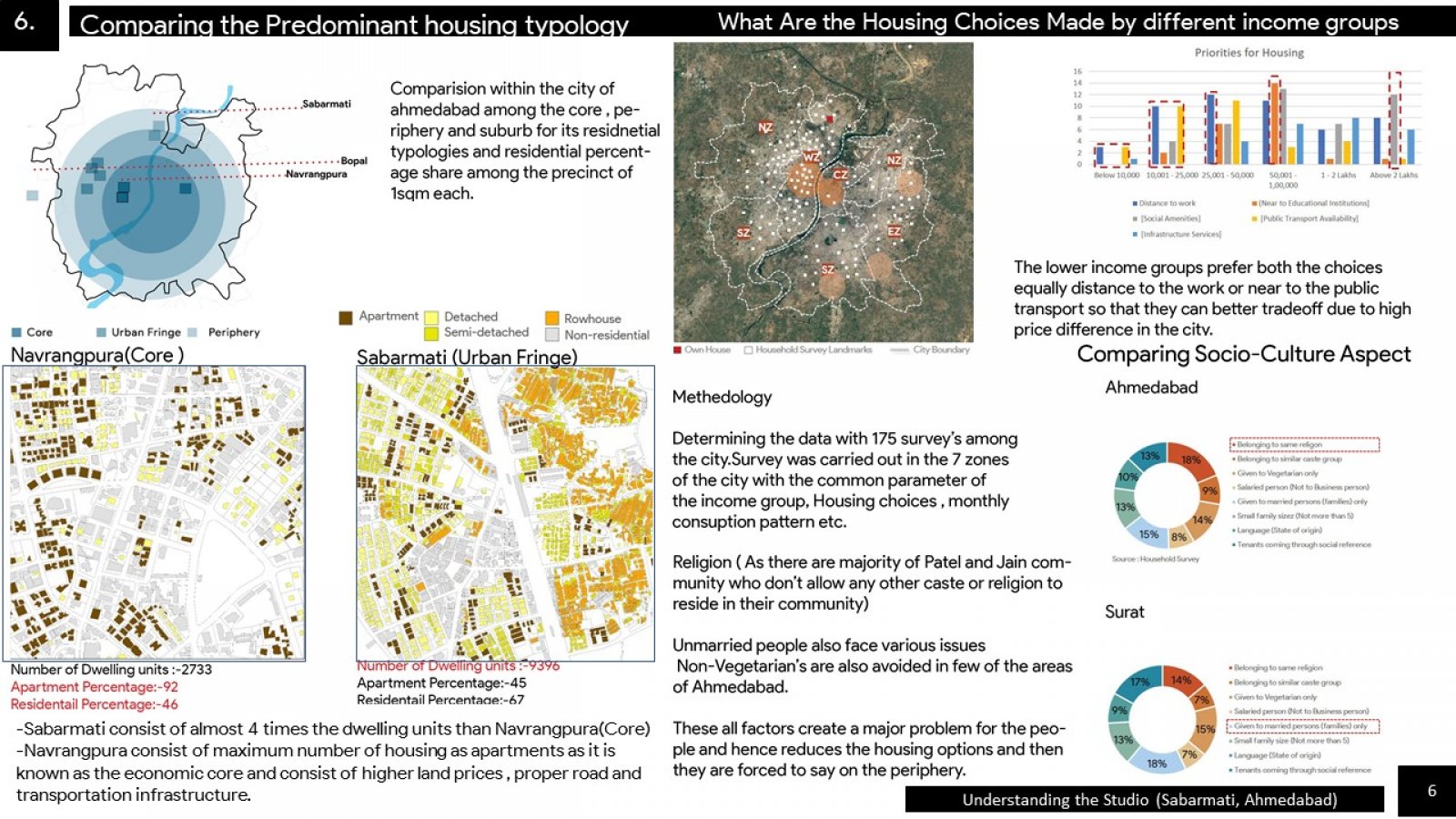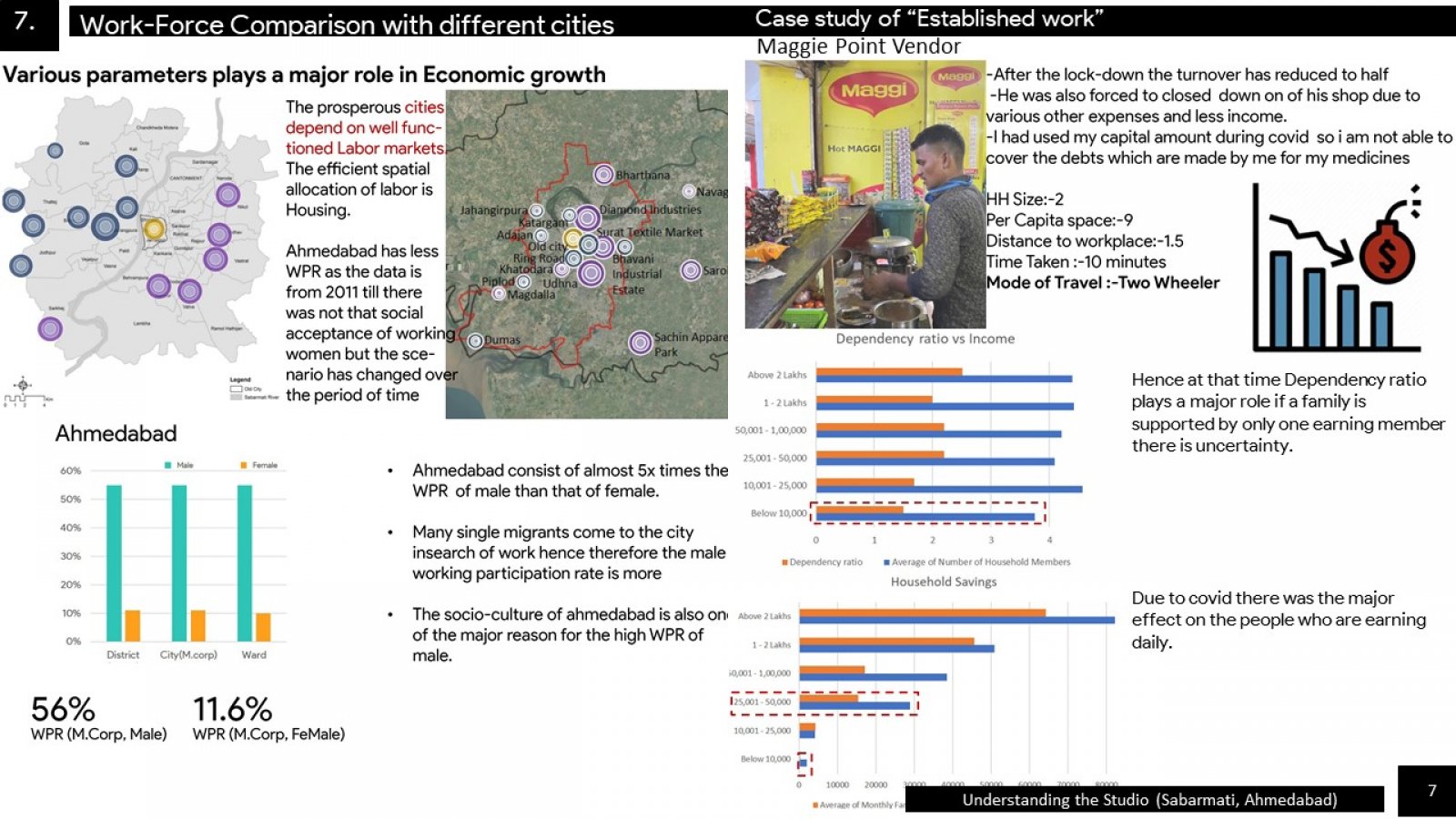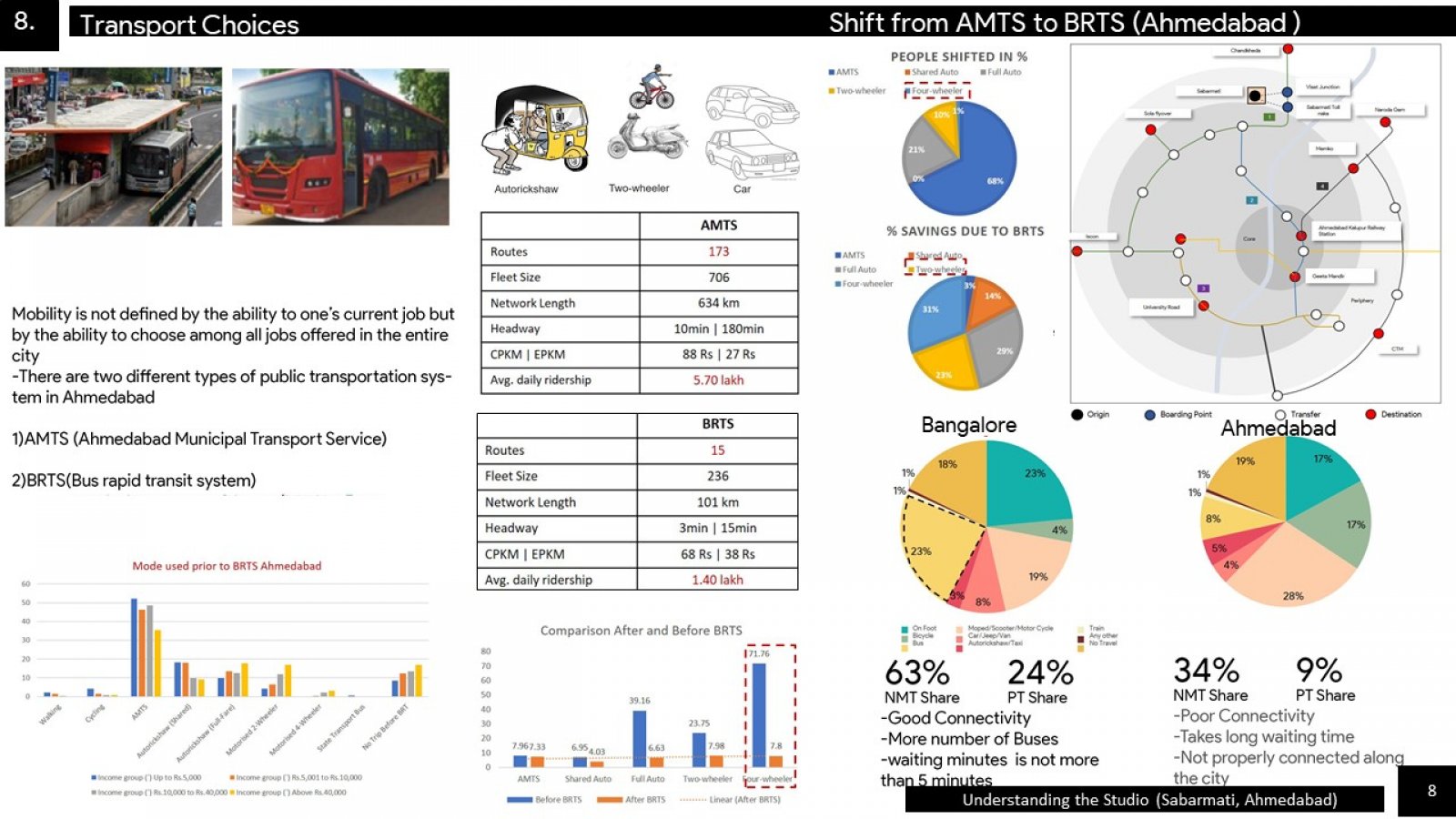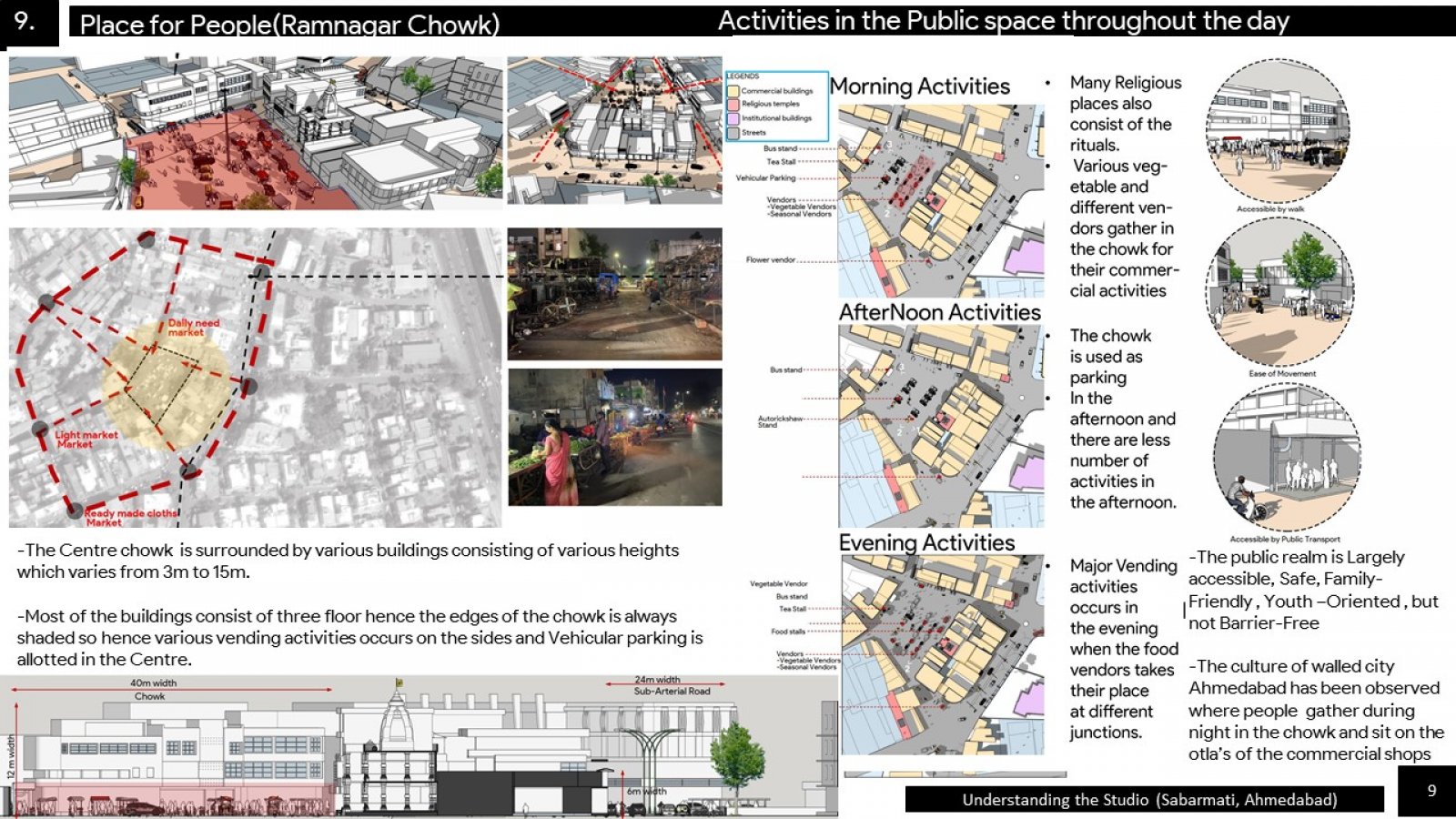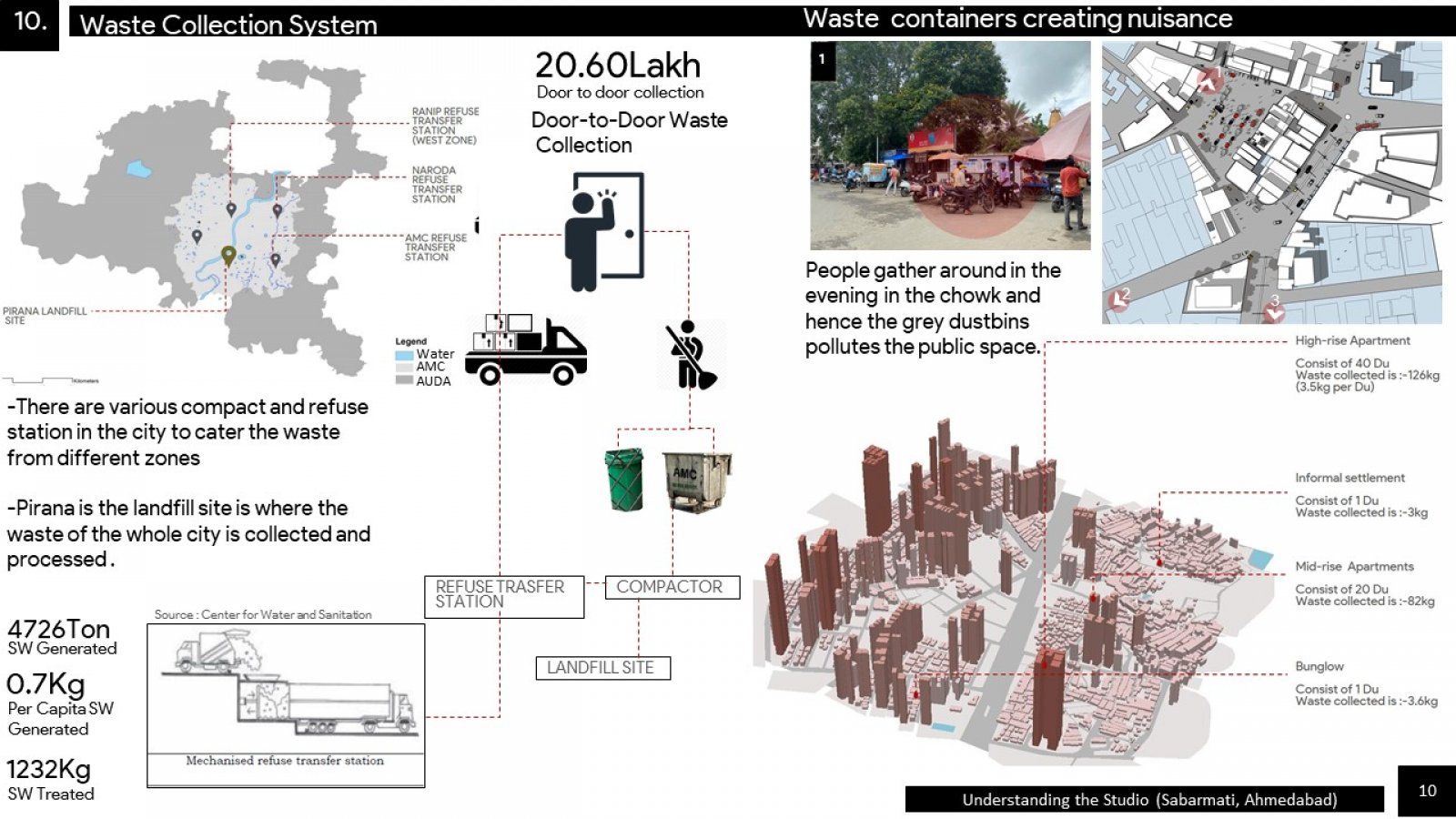Nuclear Economic centre for Western Ahmedabad
- Student PATEL MEET RAKESHBHAI
- Code PUH20201
- Faculty Planning
- Tutor/s Rutul Joshi,Umesh Shurpali,Ravi Sannabhadti,Anil kumar Roy,Subhrangsu Goswami,Nitika Bhakuni,Vanishree Herlekar,Rujul Dipak joshi,Arjun Joshi,Tarun Patel,Narendra Mangwani
- TA Kinjal Ribadia,Aarzoo Samani,Jacob Baby,Navnit Sourirajan,Anuja Singh,Giby Abraham,Ann Elizabeth Francis,Kaveri Bahure,Nikita Doshi,Shreesha Arondekar,Shuktika Sabharwal
The area of Sabarmati started developing after independence , there were many agricultural lands and Jain and Patel communities used to grow various crops. But, as the spatial extent of Ahmedabad started developing ecology was disturbed and the built mass developed as per need without a planning. The Jain community started leaving the old city due to the density of people. This area also resembles the concept of residing around the religious spaces as it was in the old city. . The main reason behind the land prices in the area were on the outskirts away from the crowds in the old city. The study area(precinct) is a square of 1km x 1 km.This particular area of Sabarmati lies in the western part of Ahmedabad, which acts as a commercial hub for the adjacent nearby areas like Motera,Visat,Kaligam, etc. The Sabarmati area acts as a suburb for various nearby locations. It was established after the great freedom fighter Mahatma Gandhi decided to set up Gandhi Ashram in the year 1915.Sabarmati is also known as holy area to live in as there are many ancient Hindu temples. The Western Railway stations known as Sabarmati station was also established in the early 19th century which influenced people to reside in Sabarmati area as it was peaceful and apart from the main walled city. Hindu and Jain communities were the first one to relocate . There are various types of building typologies in which most of them are private residences.

